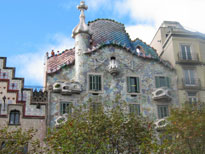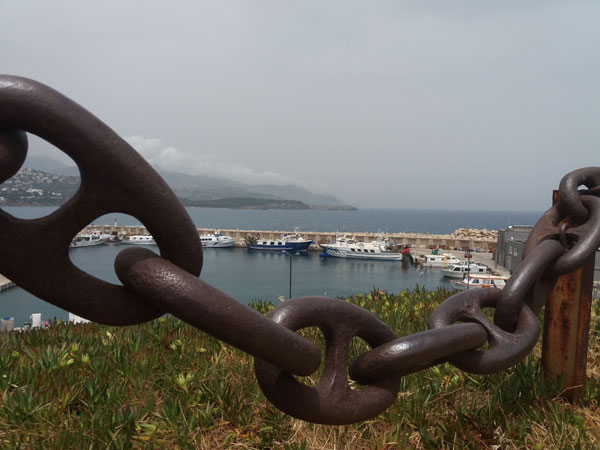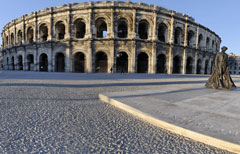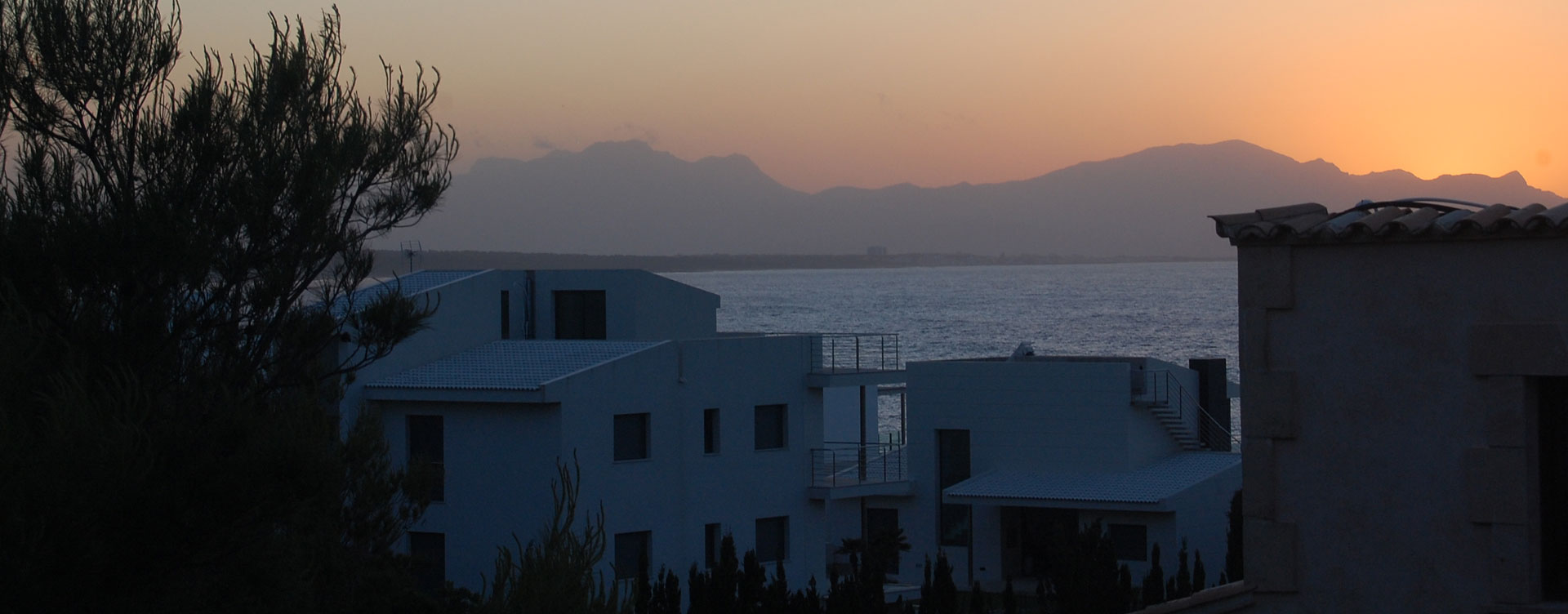Holiday Destinations in Spain from European Travel Advice
The most visited and best holiday destinations in Spain for Euro travellers from the European travel advice site
European Traveller Holiday Destinations – Spain
Spain is one of the destinations in Europe that definitely comes under the category of a sun seekers paradise. But there is much more to Spain than sun, sea and sand.
The capital of Spain is the beautiful city of Madrid which has a population of approximately 3.3 million residents, over 6 million if you include the metropolitan areas. This is the 3rd most populated city of Europe.
Spain itself, as a country, has a population of around 47 million and is split into 17 regions including the Balearic and Canary Islands
The most famous region of Spain is probably Andalusia which is a popular destination for both British tourists and expats looking to settle in a warm sunny climate. Andalusia is characterised by its abundance of white washed houses and villas which are as bright as the climate they reside in and probably came to be white for the practical purposes of reflecting the warm of the sun to keep the interiors cool and more comfortable. This is personal conjecture of course but based on a reasonable assumption.
Top 10 Tourist Destinations for Spain
Barcelona, located in the Catalan region, is the 4th most visited city in Europe and caters for around 5 million visitors each year, although 30 million pass through Barcelona airport on route to other destinations in Europe. Only London, Paris and Rome can boast more visitors. Barcelona is a pretty unique place and attracts the visitors seeking a cultural fix more so than the sun seeker variety and there is plenty on offer for those who want to explore the cultural aspects of Spain . These include the architecture, both Romanesque and Gothic plus a significant number inspired by the architect Antoni Gaudi through the turn of the 20th century.
Don’t wander into the city in beach wear however or bare chested, there are laws against this and you could be fined. See the FCO Check List
Madrid
Madrid, albeit the capital of Spain, falls behind Barcelona with respect to visitors. But it is a remarkable city which is split between the old and the new, just like many of the Spanish cities and towns. The old part of Madrid is a must visit location and there is plenty of architecture and museums to give you an idea of the history of the place. The eating, drinking and entertainment is also pretty impressive in Spain’s capital city which is well worth a visit on many levels.
Seville
Seville is in one of Spain’s most popular regions ‘Andalusia’ so it is difficult to gauge whether the draw is Seville itself or the region it is located in. That said, it is the largest city in Southern Spain and has several very popular tourist attractions, including La Giralda, the Bell Tower, converted from an original Islamic mosque, and the Plaza de Espana.
Majorca


After Spain’s 3 main cities the tourists tend to head to the coastal regions and beaches, of which there are many to choose from.
Costa de Sol
Costa del Sol sits on the South coast of Spain and is one of Europe’s most popular destinations for sun seekers. It stretches around 160km’s either side of Malaga and boasts mile after mile of golden sandy beaches which caters not just for sun worshippers, but also for water sport enthusiasts and naturists. This is where you will find famous resorts such as Torremolinos and Puerto Banus

Barcelona Beaches
Barcelona Beaches, as the name suggests are the beaches closest to the city of Barcelona. The nearest beach to Barcelona is Barceloneta which can be accessed very easily from the city, but as a result may be a little too metropolitan in nature for many. You can of course head north or south from Barcelona for more beaches, the ones to the north (effectively the start of the Costa Brava) are a little prettier than the ones to the south, which are wider and have shallower water. The Costa Dorada is a very desirable destination for day trippers from Barcelona. Being a blend of old town, artists colony and holiday resort gives it a more sophisticated feel. Plus the golden beaches, great restaurants and abundance of entertainment doesn’t do it any harm either.
Costa Blanca
Costa Blanca sits on the east coast of Spain starting pretty much at Denia in the North and ending at Torrevieja in the south. The main airport serving the Costa Blanca is Alicante and one of the most famous resorts for the British in this region is Benidorm. Although there are plenty of others to choose from all offering glorious golden sandy beaches, bars, restaurants and hotels. Benidorm has effectively grown up to cater for tourists and is full of high rise hotels and nightclubs. There is still and old part to Benidorm but it has really been swamped by the new developments, so if you want to get a feel for old Spain in the Costa Blanca you will probably find the need to head inland and away from the coast or you could perhaps head for La Villajoyosa just south of Benidorm for a much more peaceful Spanish holiday on the Costa Blanca coastline.
Costa Verde
Costa Verde is the western coastline that is mainly located in the Asturias and has been heavily influenced by the Romans. Santander is the biggest port of the region which can be accessed via the ferry service operating out of Plymouth in the UK. The climate here is much more temperate than its east coast counterparts meaning it is much cooler and sees more precipitation, hence the name ‘Green Coast’. It’s not as popular a tourist destination as some of the other coastal resorts in Spain, but in a way that adds to its charm.
The Balearic Islands
The Balearic Islands, the 3 main Balearic islands are Majorca, Minorca and Ibiza they sit just off the coastline of the Catalan region and benefit a little more from the Mediterranean climate than the mainland. Majorca has similar characteristics to mainland Spain in that there are quite a high number of high rise hotels, Ibiza is the party destination of the young (and gay) and Minorca is a little sleepier and tends to be the destination that families head for; it is for example very safe with virtually no crime. Minorca is very quaint and a lovely place to visit, but outside of holiday season don’t expect to find very much life, everywhere other than the big cities, like Mahon, tend to shut up shop.
The Canary Islands
The Canary Islands are also a part of Spain, the larger best known islands are Tennerife, Gran Canaria, Fuerteventura, Lanzarote, Tennerife, La Palma and the slightly lesser known La Gomera and El Hierro. All the islands are based on volcanic origins which is depicted by the dark colour of the sand that makes up the beaches and the rocky terrain in Tenerife. Being close to Africa, the climate is constant all year which makes it a popular winter destination.
Costa Brava
Costa Brava is the northern most stretch of coastline on the eastern coast that stretches from above Barcelona to the French border. I think you may have realised by now that ‘costa’ means coast, but what you may not know is that ‘brava’ means rugged. Both names came from the Catalan dialect and this region is very much Catalan and consists of some gorgeous rugged coastline that has defied the developers to turn it into the same kind of conglomeration of high rise hotels that exist in many of the more southern regions. Costa Brava is serviced by Gerona airport and is close enough to the French border for an excursion or two into France. It is the most northern areas of the Costa Brava that are the most beautiful, with stunning scenery, fantastic food and glorious weather. It’s well worth finding out a little more about this region, so click on the button below.
If you need specific information for using a EHIC card in Spain visit our Travel Insurance Page


